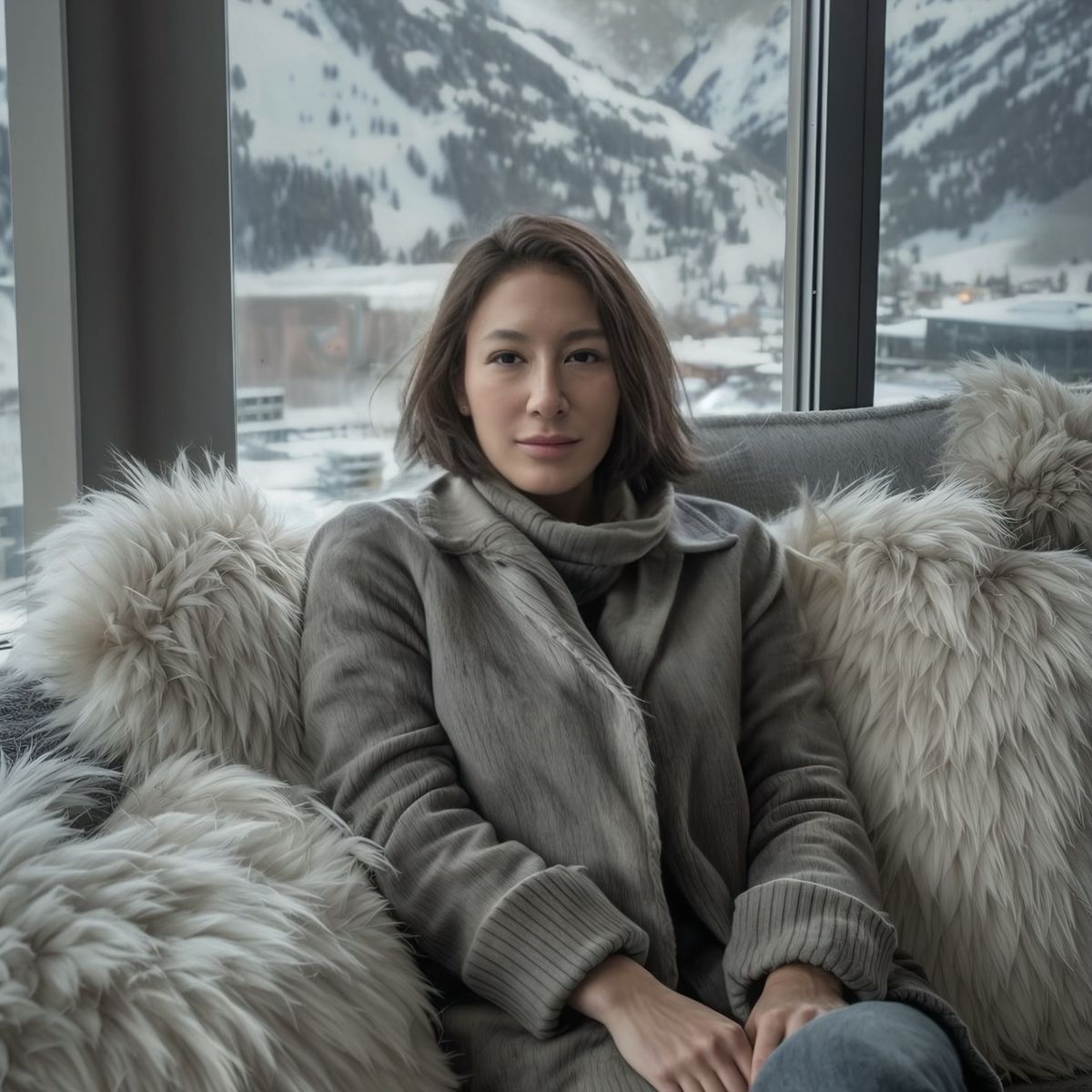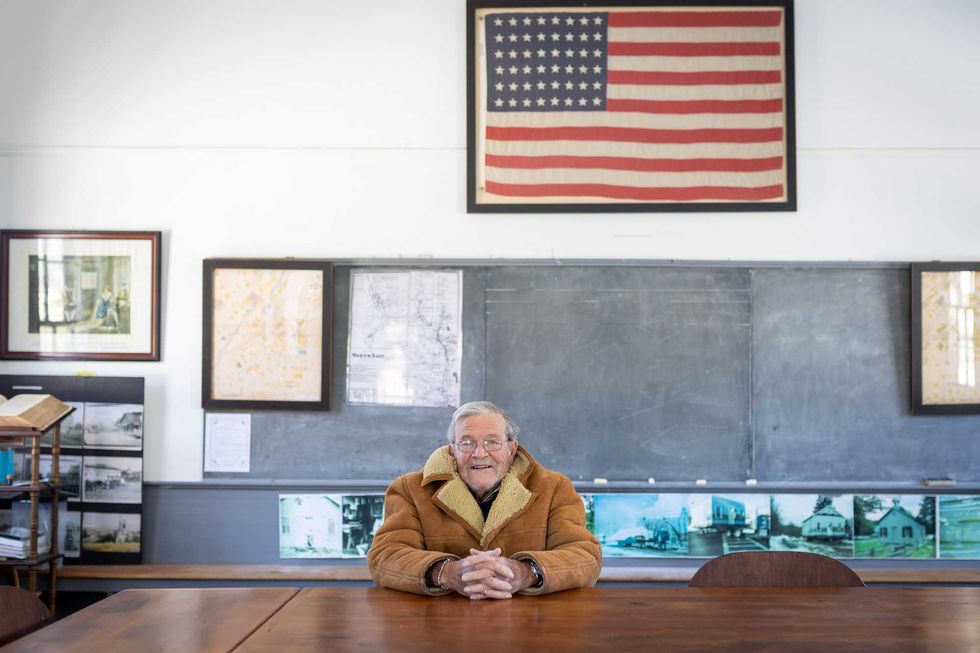Dina La Fonte at Mountainside and the rise of the ‘sober curious’ movement

Dina La Fonte
Photo by Dina La Fonte

Dina La Fonte
The “sober curious” movement has gained momentum in recent years, encouraging individuals to explore life without alcohol—whether for health reasons, personal growth, or simple curiosity. Dina La Fonte, a certified recovery coach, is the Senior Business Affairs Associate at Mountainside, an alcohol and drug addiction treatment center with a holistic approach to wellness that has several locations, including the one in Canaan, Connecticut. With nearly five years of sobriety, La Fonte blends professional expertise with lived experience, making her a powerful advocate for recovery.
Like many, La Fonte’s path to recovery was not just about removing alcohol; it was about rediscovering herself. “Once you get sober from a substance, whether it’s alcohol, drugs, gambling or what have you, emotional aspects of change come into place,” she explained. “It’s not a hard stop; it’s a continued process of integration and struggle.” Her own journey has led her to a career in recovery coaching, allowing her to help others find their own path.
“What I love about my work at Mountainside is that it allows me to be who I am without forcing me into a mold,” she said. “In recovery, we identify our authentic voice, establish boundaries, and clarify what we truly want.”
La Fonte explained that the rise of the “sober curious” movement may reflect a cultural shift in how we approach alcohol and self-care. La Fonte attributes this change to open conversations that break down stigma. “Even five or six years ago, admitting you had a problem came with embarrassment,” she said. “Now, the more we discuss it, the more people realize they’re not alone.” This newfound openness has perhaps made it easier for some individuals to explore sobriety and even do so without the pressure of a lifelong commitment.
Beyond emotional well-being, La Fonte also noted the physical benefits of sobriety. “It wasn’t immediate, but after a year, I noticed my skin clearing up, my energy improving, and my confidence growing,” she recalled. “Casual drinking dehydrates the skin, affects sleep, and contributes to inflammation. When people realize how much better they feel without alcohol, they want to hold onto that.”
In her role at Mountainside, La Fonte has expanded beyond coaching to influence organization-wide initiatives. “I still work directly with clients, but now I also help evolve how we support them,” she said. “Mountainside takes a holistic approach—integrating yoga, grief therapy, sound baths, and more. It’s not about pushing people through a system; it’s about meeting them where they are.”
La Fonte uses her social media platform as a “micro-influencer” to promote sober living and wellness. “I focus on positivity in sobriety—whether it’s skincare, self-care, or mental health. I test vegan and cruelty-free products, but I only promote what aligns with my values.”
For those exploring sobriety, La Fonte’s message is simple: “I’m not here to judge. I’m here to help.” She encourages open conversations and meeting people where they are. “If you’re curious about sobriety, let’s talk. I don’t need to know you to be proud of you. I don’t need to know you to love you. I already love you.Just reaching out is a huge step.”
With voices like La Fonte’s leading the conversation, perhaps the sober curious movement is more than a trend—it’s a cultural shift redefining what it means to live fully and authentically.
To contact Dina La Fonte, email her at dina.lafonte@mountainside.com, explore the Mountainside website at mountainside.com, or follow La Fonte on Instagram @dinalafonte
Ralph Fedele sits at a desk in the historic Irondale Schoolhouse, which he led the effort to relocate to downtown Millerton.
MILLERTON — After serving for 12 years on the North East Town Board, Ralph Fedele says he has only one regret.
“I wish I could be called a ‘local,’” he joked with a warm, booming laugh.
Fedele moved to Millerton from New York City 37 years ago, in 1988, and has since worn many hats — volunteer, historian, advocate, elected official — yet he still doesn’t believe he’s earned that title.
“I’m a transplant,” he said matter of factly. “I’m from the city.”
Before settling in Millerton, Fedele spent 25 years working in merchandising at JCPenney.
His roots, however, trace back to Rhinebeck, where he grew up on a 97-acre farm and enjoyed what he describes as an idyllic childhood.
“It was marvelous,” he said, with a twinkle of nostalgia in his eyes. As a boy, he climbed apple trees, spent hours in the family barn’s hayloft, played with neighbors until sunset, and helped his Sicilian grandmother — his nonna — in the garden. Today, Fedele wears her ring. “Any time I’m a little depressed or I want to remember,” he said, “I can talk to her.”
Growing up with an Italian grandmother sparked a lifelong love of history and culture. That curiosity eventually took Fedele to Italy, where he visited the church in which his grandmother was baptized. “Because I love history so much, I wanted to know where my grandmother was from, so I traveled to her village in Sicily.”
Along the way, he uncovered another piece of family history. His great-grandfather, Giovanni Nicolini, was a noted Italian sculptor whose work still stands outside Palermo’s Teatro Massimo, the largest opera house in Italy. Fedele later made a pilgrimage there and photographed his ancestor’s name on the bronze plaque outside of the theater.

The Irondale Schoolhouse
Years after settling in Millerton full time, Fedele was driving north on Route 22 when he spotted an old, classic building and couldn’t stop thinking about it.
“It was in dire straits,” he recalled. “Right on the road, but beautiful. I remember thinking, ‘Wouldn’t that be a great building to move into the village?’”
That moment would eventually turn into Fedele’s lasting legacy.
He left his post at the North East Historical Society to found Friends of the Irondale Schoolhouse, leading an eight-year effort to “move, restore, and repurpose the building.”
Supervisor Chris Kennan said the project remains inseparable from Fedele’s name. “Every time I pass by the Schoolhouse, I think of Ralph,” Kennan said. “It was his vision and persistence that enabled this dream to become a reality.”
Fedele joked that people may have thought he was crazy during the lengthy restoration. “I was a tyrant,” he said with a laugh. “I really made sure that we were able to get it done.” The effort required coordination with the state, the county, village and town officials, and his newly assembled nonprofit board.
As a self-proclaimed history buff, Fedele didn’t stop at the restoration. He found a list of students in old records and did what any determined historian would do. He opened the telephone book and started making calls.
Eventually, he tracked down one of the schoolhouse’s original students — Mary (Mechare) Leitch — who, at the age of 101, returned to the building after renovations were complete.
“It was a marvelous time,” smiled Fedele. “I was so happy to see her.”
‘Trust is earned’
Today, even though he won’t call himself a local, Fedele is a familiar fixture in town. You can find him each week enjoying conversation and a cup of coffee at Talk of the Town Deli, or getting stopped in town by neighbors and friends for a chat.
“I have gained the trust and confidence of a lot of people,” Fedele said. “It comes a little bit at a time. Trust is earned.”
Not only has Fedele served as a town board member, he has volunteered for Townscape and served as the president of the North East Historical Society. He was also one of the first advocates of preserving history by fixing toppled gravestones at the Spencer’s Corners Burying Ground.
His service was formally recognized at his final Town Board meeting through a resolution commending his three four-year terms as councilman, citing his “good humor, kindness to all and deep concern for the community’s senior citizens and for those living on fixed incomes.”
An emotional Fedele addressed the room with a mantra he often repeats. “When you leave, leave this place a little bit better than you found it,” he said. “That’s what I have always tried to do.”
Neighbors react
During the public comment, several residents stood to thank Fedele.
Claire Goodman, a member of the village Zoning Board of Appeals and Townscape volunteer, said Fedele was among the first to welcome her to Millerton.
“Whether we’re standing out in the cold, scrubbing tombstones at Spencer’s Corners, or ringing the bell at the schoolhouse, you always have such grace and you’re such a gentleman.” She added, “The way you laugh, it opens my heart.”
Kathy Chow, who serves on the Conservation Advisory Council and the Climate Smart Task Force, referred to Fedele as a “pitbull,” adding, “We all have hard things that we do, and we keep pushing at it, but you’re the one who makes me think I can keep going.”
Fedele describes his retirement from the town board as bittersweet. “I’m going to miss this,” he said. “I really am.”
Mad Rose Gallery on Route 44 in the Village of Millerton is decked out with lights and decorations to celebrate the holiday season.
MILLERTON — The Village of Millerton is inviting residents and businesses to enter its annual house decorating contest, with judging now underway through Dec. 28.
Awards will be presented in several categories, including Best Lights, Most Creative, Best Overall and Best Commercial Front.
Entries will be evaluated by a panel of judges using established criteria. Creativity will be judged based on originality, variety of materials used and the use of homemade vs. commercially made decorations. Appearance will consider color coordination, balance and overall attractiveness, while effort will reflect the time and energy put into preparation and presentation.
Judging will be conducted by drive-by observation between 6 p.m. and 11 p.m., and displays must be clearly visible from the street side of the house at night. People and pets may not be included as part of the design.
Winners in each category will receive a gift basket, gift certificates and recognition in The Millerton News. Awards will be distributed on Friday, Jan. 9, 2026.
The contest is open to residents and businesses in the Village of Millerton and the Town of North East. Entry forms can be obtained from Village Hall or at villageofmillerton-ny.gov.